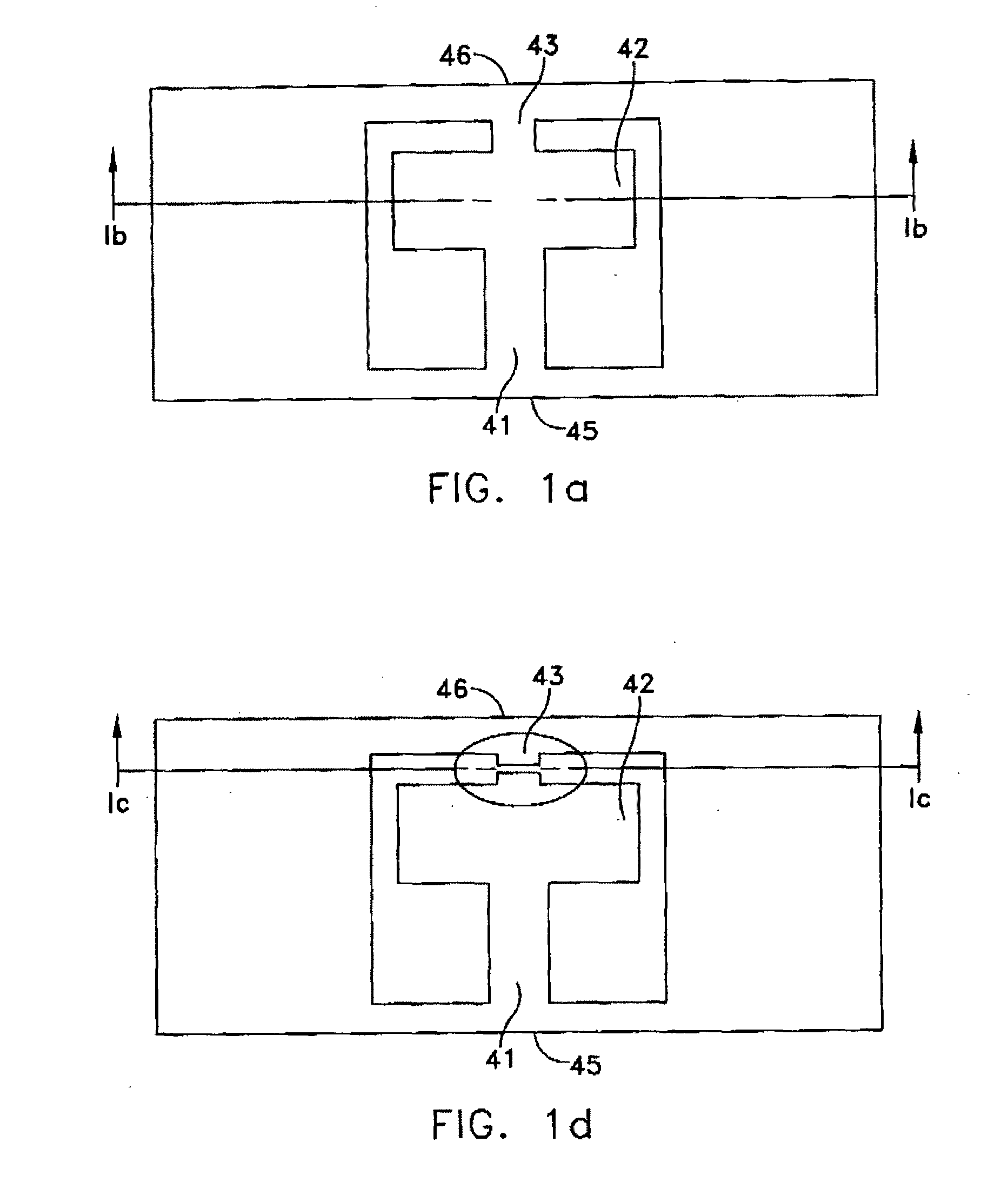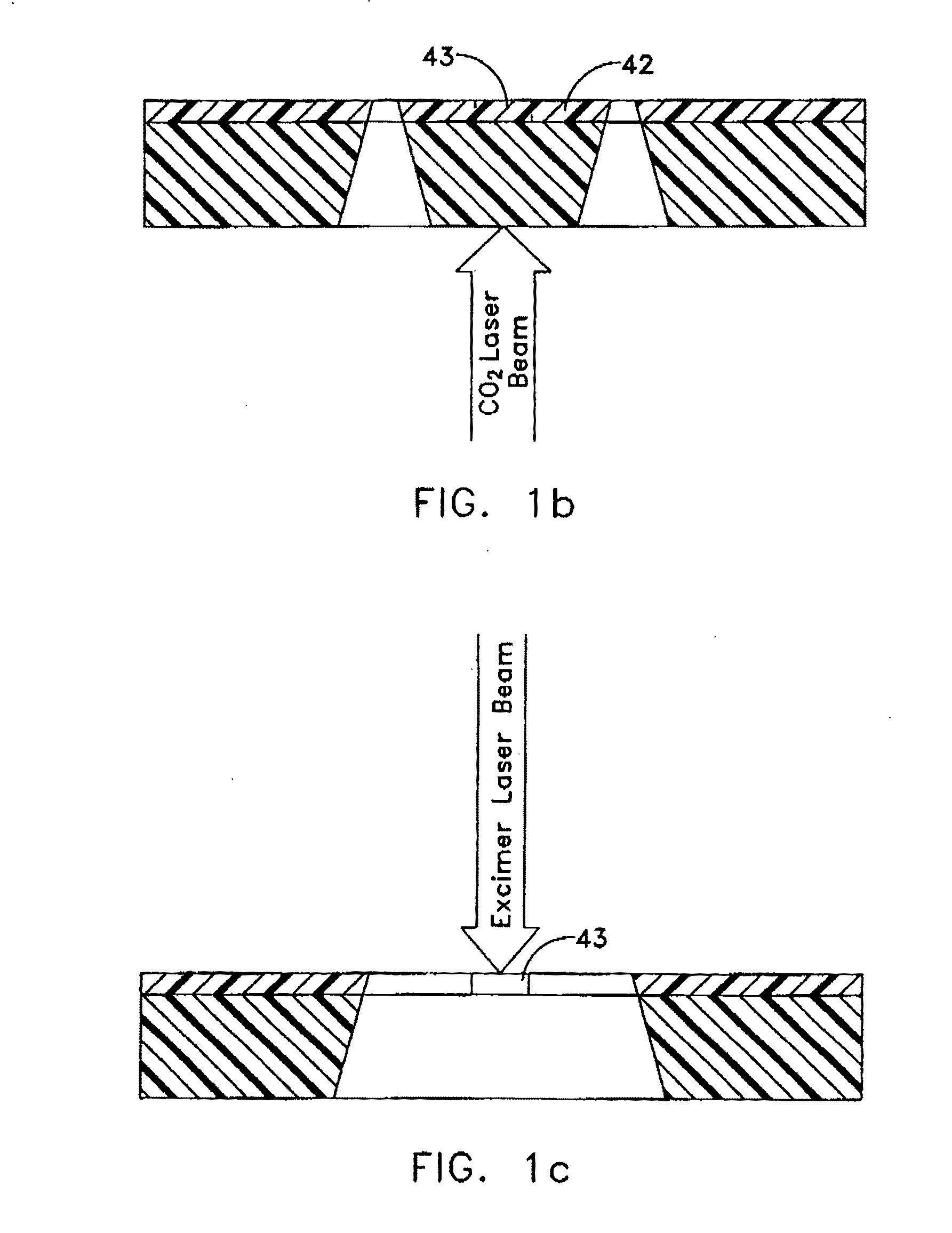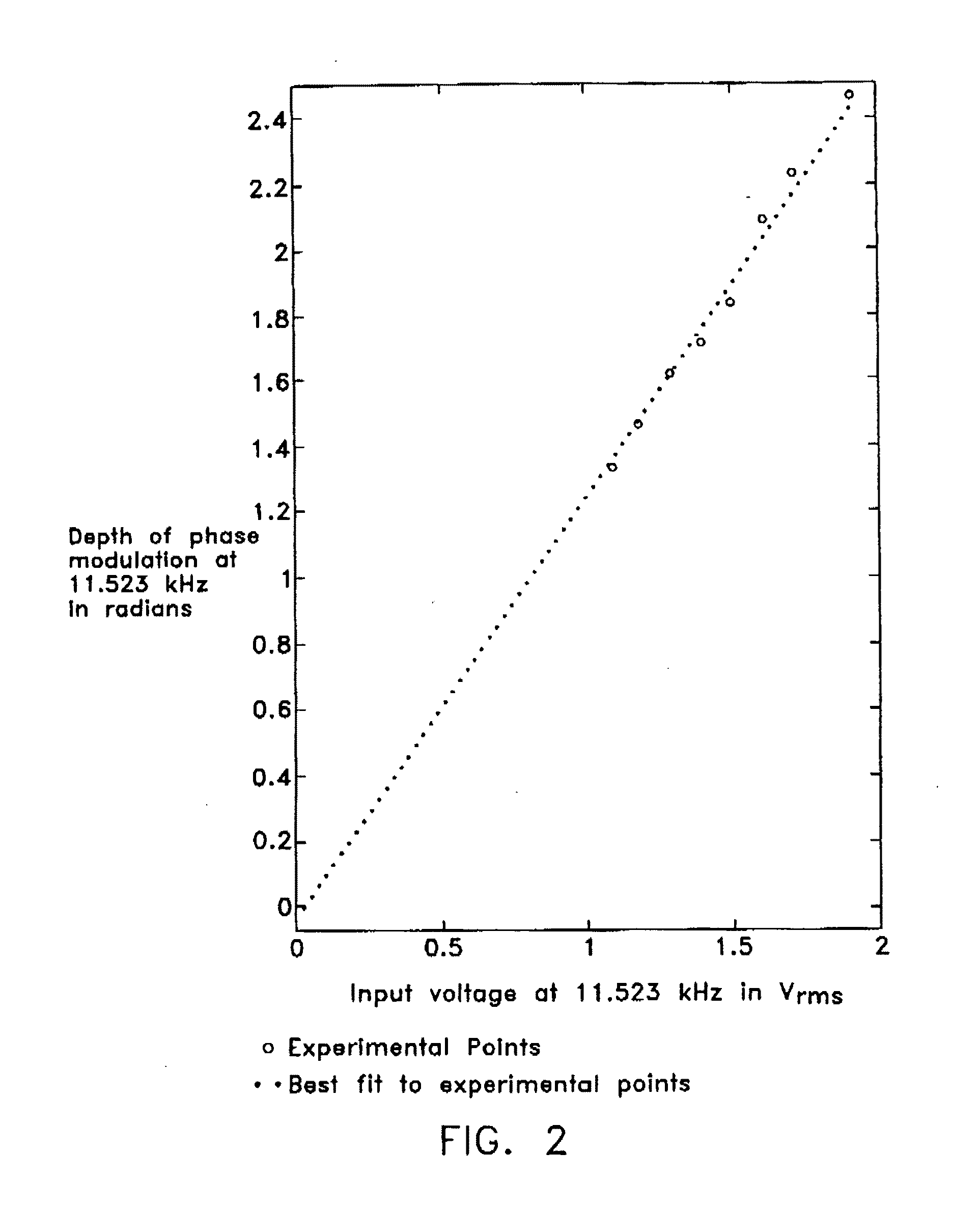However, RIE is an expensive process, which requires the use of high vacuum equipment.
Deep
etching of polyimide is problematic because there is no known masking material with
high selectivity ratio toward polyimide.
However, etching of polyimide has been limited to a depth of a few microns due to
erosion of the
metal masking layer.
The lack of suitable masking material for polyimide has been a
limiting factor in the use of RIE.
This cannot be readily achieved with RIE because the
electric field lines in a
plasma, which define the trajectory of the energetic ions terminate perpendicularly to the wafer surface.
Thus, the desired oblique walls at the end faces cannot be obtained with
silicon micromachining technology.
There are problems associated with fabricating microstructures from the bulk of
silicon substrates, for example the undercutting of convex corners, which alters the shape of microstructures, e.g. the
inertial mass at the end of a
cantilever.
Another problem with using silica films for waveguides in micro-mechanical applications, which is not encountered in micro-electronic
processing, is that thick films (up to 50 μm) are needed.
The problem with thick films is that they tend to crack and peel off due to the large residual stresses built-in during deposition due to the mismatch between the coefficients of
thermal expansion of the film and substrate.
Another drawback of
high silica films is the necessity of deep RIE to form
ridge waveguides, which is an expensive process and which is limited due to
mask erosion.
The use of polyimides on silicon presents problems in regards to wet and
dry etching and to the mismatch in the coefficient of
thermal expansion, so that polyimide films on silicon wafers tend to have limited utility in fabricating micromachined structures for optical wave guiding applications.
While this reduces the stresses, it creates a highly anisotropic film, which is undesirable for optical wave guiding applications.
Thus, it has not been possible to simultaneously reduce the stresses and minimize
anisotropy and
birefringence in a polymeric film on a silicon wafer.
The residual side wall angle of a wet etched film is unpredictable due to the swelling when a developed film dries at elevated temperatures.
This is aggravated in multilayered films because the solvents of subsequent
layers attack the edges of the previous layer at the interface between the
layers resulting in uneven side walls.
However, it is not possible to tune such an optical device thermally due to its temperature-insensitive design.
The use of a very thin substrate is undesirable because it is fragile.
However, the use of
quartz for RF substrates has been problematic because it is expensive and brittle.
However, this is problematic because it creates a relatively long step that the light must
traverse between the edge of the wafer and the edge of the film.
If the step is at the output edge then it interferes with the collection of the light by a lens for feeding into a pick up
fiber.
This step is particularly problematic over silicon wafers.
However, bulk-micromachined structures require more driving force and power to move or bend using thin actuating films.
RE has been used to pattern ZnO; and
Argon ion beam milling has been used to pattern PZT, both of which are expensive
dry etching techniques.
A problem with
dry etching has been poor selectivity, i.e. the etch rate of the masking layer or other
layers in the structure can be comparable to or even exceed the etch rate of the layer that is intended to be etched.
This causes low yield and poor dimensional control of ZnO devices, and poor selectivity toward PZT relative to the metallic layers.
It also limits the etch depth of MEMS devices to the thickness of the
mask layer, and necessitates the use of extra masking layers, which is undesirable.
However, it has been difficult to coat the cylindrical wall of a hole with an
aspect ratio greater than 1:1 reliably.
One drawback of this technique is that the holes end up at the same locations in all the layers, which wastes board space and prevents the achievement of
high density.
However, this technique also yields
low density because it is difficult to maintain a high degree of alignment between the holes during the lamination process.
The drawback of the build up process is that the successive layers take the shape of the layers underneath with the resulting loss of planarity and registration accuracy, hence density.
However, the challenge is not drilling smaller holes.
Getting the walls of the tiny holes to wet for the metal to stick to it has proved to be challenging.
However, the chemical processes responsible for seeding thin metallic films on flat surfaces are totally different from those that are used to coat vertical cylindrical walls of tiny holes.
For example, dry
coating techniques such as
sputtering and thermal
evaporation yield excellent film coverage on flat surfaces but cannot coat narrow holes, particularly those with high aspect ratios.
However,
electroless plating cannot be used to coat 50 μm or smaller vias because it releases
hydrogen bubbles of about the same
diameter, which get trapped in the holes and block the plating process.
The use of adhesive layers, such as Pyralux manufactured by DuPont, increase the complexity of the
assembly and can become the
bottleneck limiting the speed and density of the interconnect.
The handling and packaging of thinned silicon wafers and chips presents a major problem due to breakage of the thin wafers, which reduce the yield dramatically.
The back-end-of-the-line (BEOL) industry does not have a viable solution for this problem.
Silicon membranes, only a few microns thick, are very flexible and commercially available, albeit very expensive.
Even if the thin silicon device survives the
processing, the final packaging presents additional risks of breakage and further reduction of yield.
Thin silicon wafers are not inexpensive.
Even though these wafers are flexible, but they are delicate, fragile and break easily if not handled properly.
Thin silicon wafers and dies require special handling and extreme care, which add cost.
All existing solutions are extremely difficult to implement and introduce very high risk of wafer breakage.
Most handling techniques currently being investigated cannot survive all the processing steps.
The tape is inexpensive and can effectively support the wafer during
grinding but cannot withstand high temperatures encountered during other processing, such as backside metallization.
The risk of breakage increases drastically during demounting especially for wafers below 80 μms.
Further, the tape is incompatible with standard automated tools because it does not provide a rigid support.
The silicon and glass wafers provide rigid support compatible with automated handling but the risk of breakage during de-
waxing is still very high.
Alternatively, the wafer can be held electrostatically on a chuck, but this solution is expensive and not useful for ultra-thin
grinding due to insufficient
shear strength.
Further, it is incompatible with subsequent processing steps such as etching or elevated temperatures due to dissipation of the charges.
The risk of breakage during de-bonding and cleaning is very high.
Sliding the thin wafer at temperatures above the flow point of the glue and subsequent
acetone cleaning poses extra risks of breakage.
These are tough requirements.
The industry does not have a viable solution.
The high risk of breakage is due to the need to de-bond the thin wafer after grinding.
There is currently no suitable substrate, which supports the silicon wafer during
thinning and acts as a permanent carrier.
The drawbacks of polysilicon circuits are that they are too slow due to the gate material being non silicon-
oxide.
This causes poor performance due to decreased carrier mobility.
These devices are fabricated at temperatures, which do not exceed 200° C.-300° C. Growing good
gate oxide for high performance MOSFETs, for example, requires temperatures of at least 800° C.: Polymeric flexible materials cannot withstand such temperatures.
Further, fabs and foundries are reluctant to introduce
polymer-based substrates in their MOS lines due to
contamination issues.
For these reasons large area
flexible circuits fabricated on sheet or roll are bound to low performance devices.
Silicon dies about 5 mm×5 mm have been thinned down to 20 μms, metallized with about 6-8 μms of
copper and
flip chip mounted on spun-on polyimide films also 20 μms thick, with significant stress and yield issues.
However, high performance
single crystal silicon devices and circuit layers have not been transferred to flexible substrates.
To date there has not been a suitable flexible substrate that protects the fragile thin
cell and serves as a permanent carrier, which is scaleable to large panels.
The second type of solar cells are single or poly-
crystalline silicon grown on silicon wafers, and contain
indium, which is a rare and expensive metal that contributes to the high cost of solar panels.
Thick wafers are brittle and need protection from mechanical stress, hence the heavy support structures.
The
lightness and flexibility of the
Kapton allows reaching specific powers in excess of 1000 W / kg, but the problem with
Kapton is its lack of stability at high temperatures and the variation of its thermal properties with temperature.
Kapton does not have the quality to serve as a permanent carrier.
 Login to View More
Login to View More 


